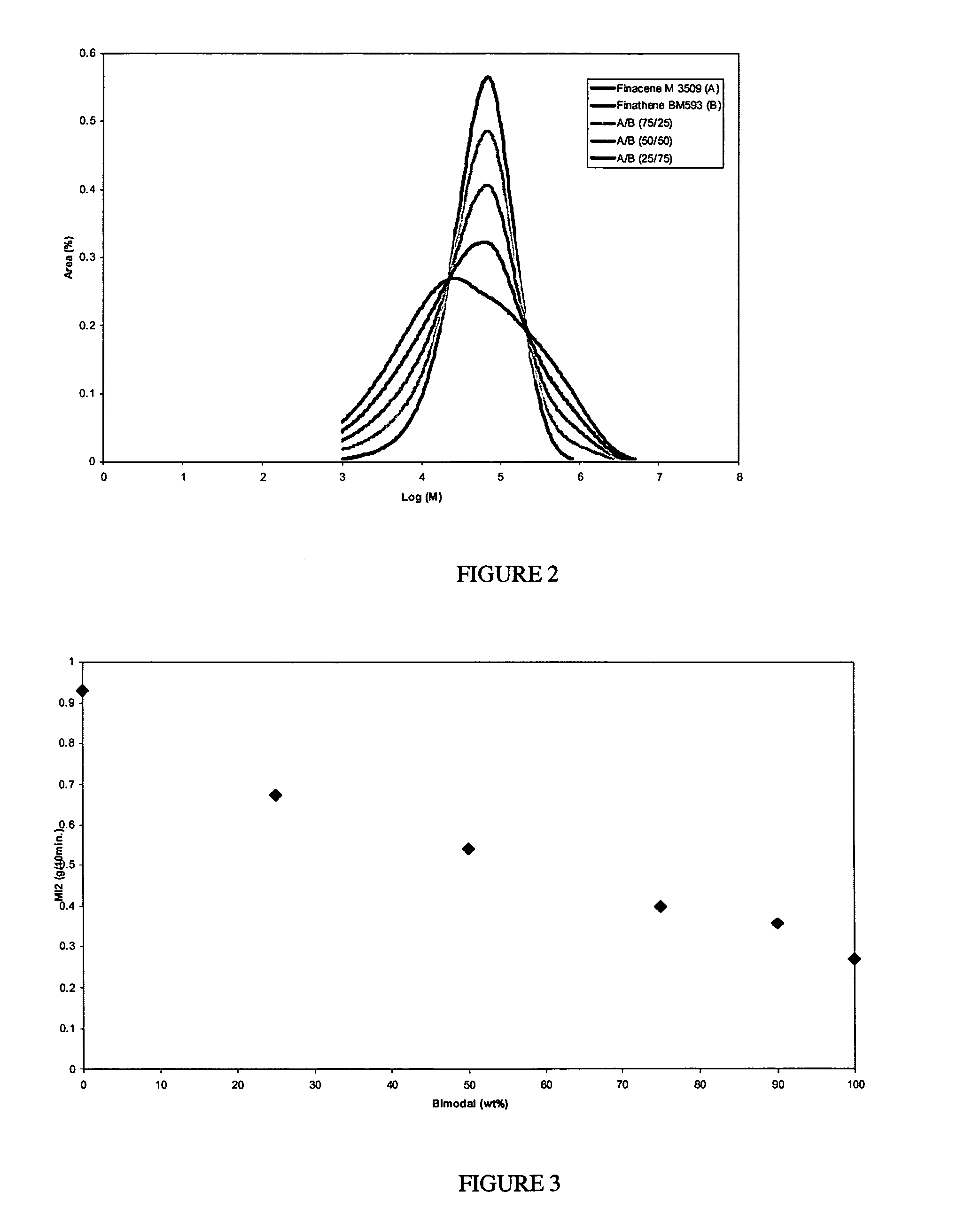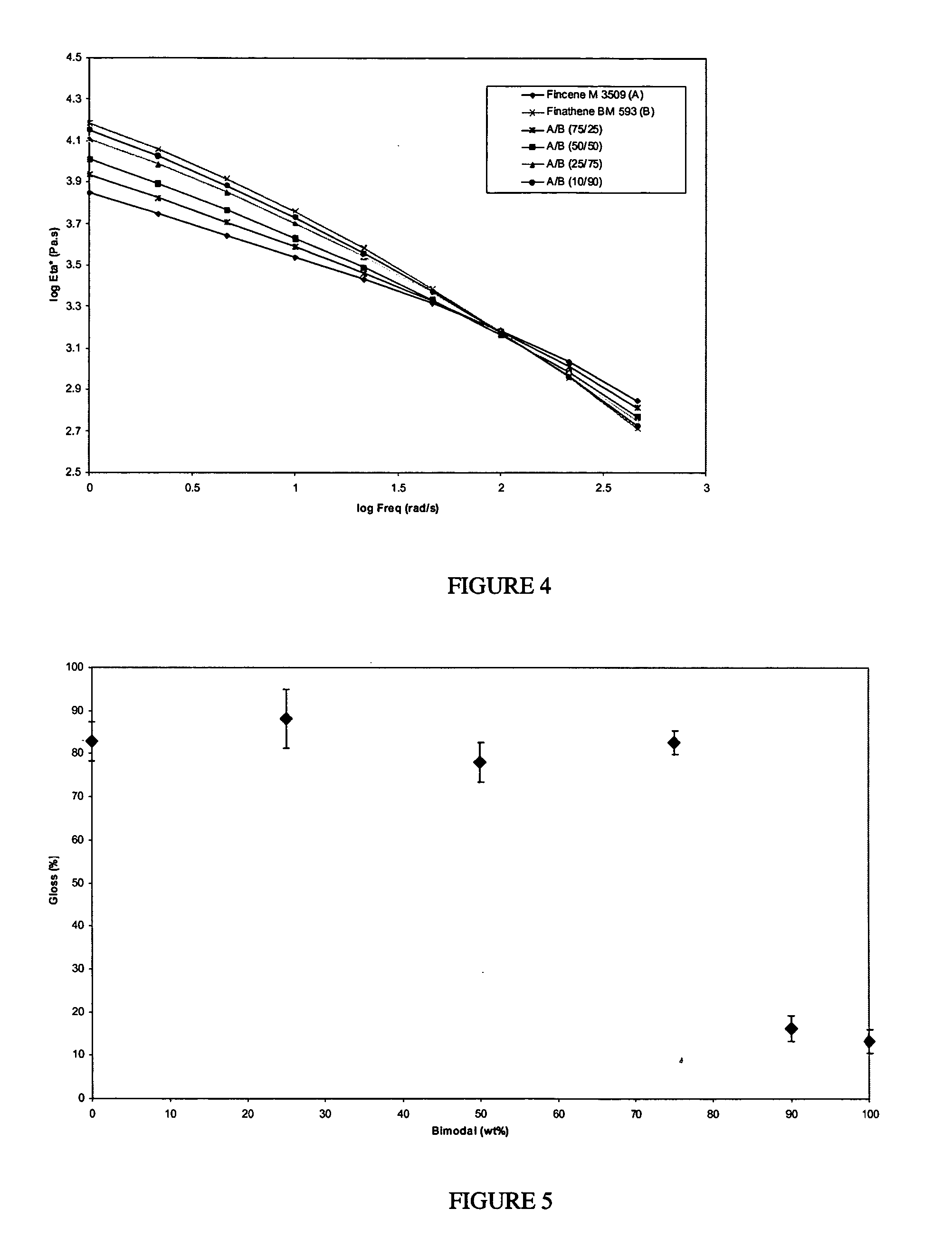Polyethylene blends with good contact transparency
- Summary
- Abstract
- Description
- Claims
- Application Information
AI Technical Summary
Benefits of technology
Problems solved by technology
Method used
Image
Examples
examples
[0057] Several polyethylene blends have been prepared from a metallocene resin R1 sold by ATOFINA Research under the name Finacene® M3509 and a bimodal Ziegler-Natta resin R2 sold by ATOFINA Research under the name Finathene® BM593.
[0058] The properties of the starting resins are summarized in Table I.
TABLE IResinR1R2Density (g / cm3)0.93450.9579MI2 (dg / min)0.93—HLMI (dg / min)28.527.7Mn (Da)3213312329Mw (Da)81318166544D2.513.5
The blends were prepared by melt blending, using respectively 10, 25, 50, 75 and 90 wt % of the bimodal Ziegler-Natta resin R2, the remainder being the metallocene-prepared polyethylene resin R1, and they were pelletized on a Thoret extruder.
[0059] Bottles were then prepared on a Krupp Kautex KEB 5-430 blow molding machine from dry-blended pellets. The bottles' characteristics were as follows: weight=20 g, capacity=430 mL and wall thickness=0.5 to 0.7 mm.
[0060] The blow molding conditions were as follows: screw diam=40 mm, tool=13 / 12 mm, screw comprising 11 ...
PUM
| Property | Measurement | Unit |
|---|---|---|
| Density | aaaaa | aaaaa |
| Melt flow index | aaaaa | aaaaa |
| Electrical resistance | aaaaa | aaaaa |
Abstract
Description
Claims
Application Information
 Login to View More
Login to View More - R&D
- Intellectual Property
- Life Sciences
- Materials
- Tech Scout
- Unparalleled Data Quality
- Higher Quality Content
- 60% Fewer Hallucinations
Browse by: Latest US Patents, China's latest patents, Technical Efficacy Thesaurus, Application Domain, Technology Topic, Popular Technical Reports.
© 2025 PatSnap. All rights reserved.Legal|Privacy policy|Modern Slavery Act Transparency Statement|Sitemap|About US| Contact US: help@patsnap.com



